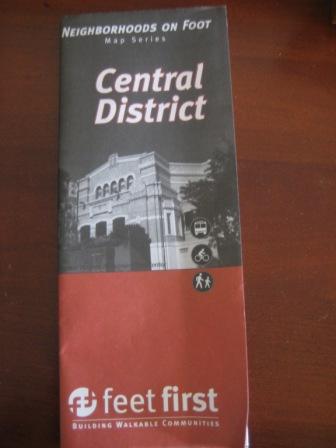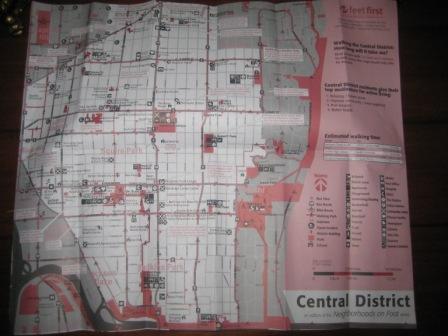A few Saturdays ago (around the same time this article was making the rounds on the internets), I participated in a Civil Rights walking tour of my neighborhood, sponsored by the Squire Park In Motion program. The tour was a lot of fun (thankfully for Chicklet and Busling, many parks are named for Civil Rights heroes), and I even learned something new.
In the early 60s, the Central Area didn’t have any crosstown bus routes. This, of course, made it difficult for the neighborhood’s residents to travel to other parts of the city*, including (and especially) the University District. Members of the Seattle chapter of CORE identified the issue and started looking for a solution.
In 1966, Seattle CORE launched an action project to get the Seattle Transit system to run a bus along Twenty-Third Avenue, connecting the Central Area with the University District and points north and south… When CORE negotiators discussed the need for this … the transit authority told us, “There is no need. No one would ride,” so it would “not be profitable.”
CORE and other organizations formed the Crosstown Bus Committee. CORE members set about gathering facts about rider patterns … as well as the numbers of people transferring downtown to the University District… I rode the bus at 1 AM while my husband was home with our young son.
[…]
Armed with these facts, and after additional meetings with transit managers, CORE prevailed. Seattle Transit initiated a route using Twenty-Third Avenue directly to the University District. This was known for some time as the crosstown bus. It is now taken for granted as the number 48 bus, frequently full and clearly a success.
– Maid Adams, coauthor of Seattle in Black and White** and founding member of the Seattle chapter of CORE
That’s right folks, our beloved “doctor,” the vehicle version of Tiger Woods, was born from the hard work (and persistence!) of some committed people who believed that a community could be better served by public transportation.
I am always inspired by stories like these. (And I’m not the only one; Ms. Adams was honored by some modern-day transit activists late last year.) They remind me that change can and does happen, that citizenship involves responsibility, and that people in power do sometimes listen to reason–or at least, really loud voices.
***
*This, it seems to me, is an ongoing PT issue citywide. We’re still working it out.
** Our tour guide is the one who told me I could find the information in this book. (That’s what I get for not attending the library’s reception with the authors in the spring.) She also mentioned the Douglass-Truth soul pole.


